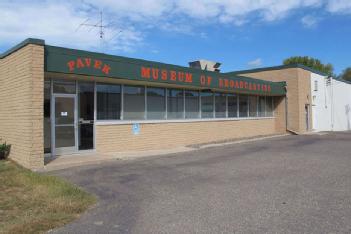| Description |
The Pavek Museum of Broadcasting is a museum in St. Louis Park, Minnesota (just west of Minneapolis) which has one of the world's most significant collections of vintage radio and television equipment. It originated in the collection of Joe Pavek, who began squirreling away unique radios while he was an instructor at Dunwoody Institute in 1946. Students of the day were given old radios to disassemble in order to learn their trade, and Pavek was concerned about what might be destroyed in the process.
History
Pavek's collection expanded through the 1970s, when he decided to start looking for someone to take over for him. However, he had trouble finding someone who would take the job and was about to sell off the collection at auction in 1984 when Earl Bakken stepped in. Bakken, the founder of Medtronic and the inventor of the first wearable pacemaker, had also spent many years fixing old radios and TVs, and shared Pavek's passion for vintage hardware. The two joined Paul Hedberg of the Minnesota Broadcasters Association in creating a non-profit organization that would be the new museum's parent. The Pavek Museum finally opened on October 29, 1988, a day that was honored with a proclamation by Governor Rudy Perpich as "Joe Pavek Day."
Joe Pavek died a year later in 1989, and Bakken stepped in to lead the organization. In 1990, the collection was greatly expanded with the addition of the collection of John T. "Jack" Mullin, an Army Signal Corps veteran of World War II who had brought some AEG Magnetophon tape recorders back to the United States from Germany. Mullin used them to record Bing Crosby's radio programs, the first use of magnetic tape in American broadcasting. Over the years, he acquired other recording devices and eventually amassed a world-renowned collection.
The museum has offered several educational courses since its founding, both for children and adults. |



 pavekmuseum.org
pavekmuseum.org 










